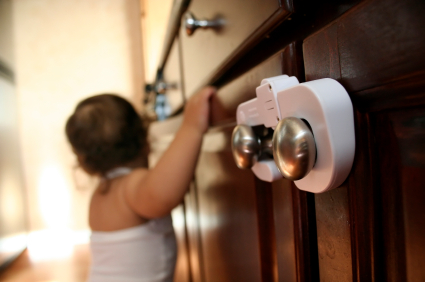Please note: The Home Safety Checklist is intended as a reference tool only. Installing safety products can help reduce unintentional injuries but is not a substitute for adult supervision. Supervision is the most important thing you can do to protect your children. For more information on products, advisories, warnings, and recalls, please visit Health Canada.
Falls
Did you know? Falls are the most common cause of injury for young children and the number one reason young children end up in the Emergency Department.
Safety tips for families with babies
- Supervise your child - stay close to your baby and within arm’s reach. When you can’t be within arm’s reach, put your baby in a safe place like a crib or playpen
- Change diapers on the floor or keep one hand on baby when on a change table
- Place items like car seats, rockers, and carriers on the floor
- Use the harness strap when baby is in a stroller or swing, car seat, stroller, or high chair
- Install sturdy wall-mounted gates at the top and bottom of stairs
- Put cribs and other furniture away from balconies and windows
- As your baby is able to sit up, move your crib mattress to the lowest position
Safety Gates
There are two options for safety gates; wall-mounted gates and pressure-mounted gates. Wall-mounted gates should be installed at the top of the stairs, and pressure mounted can be installed at the bottom. Once a child’s chin is in line with the top of the gate, it will no longer be effective in preventing injury. The child will be able to climb over or open the gate (approximately at 2 years of age). Children can then be taught to go up and down stairs safely and slowly using the handrail.
Safety tips for families with toddlers
- Supervise your child- stay close and within arm’s reach
- Attach furniture to the wall using anchor guards or safety straps
- Install window guards and stops
- Keep furniture away from windows
- Install locking devices on drawers
- Install sturdy wall-mounted gates at the top and bottom of stairs
